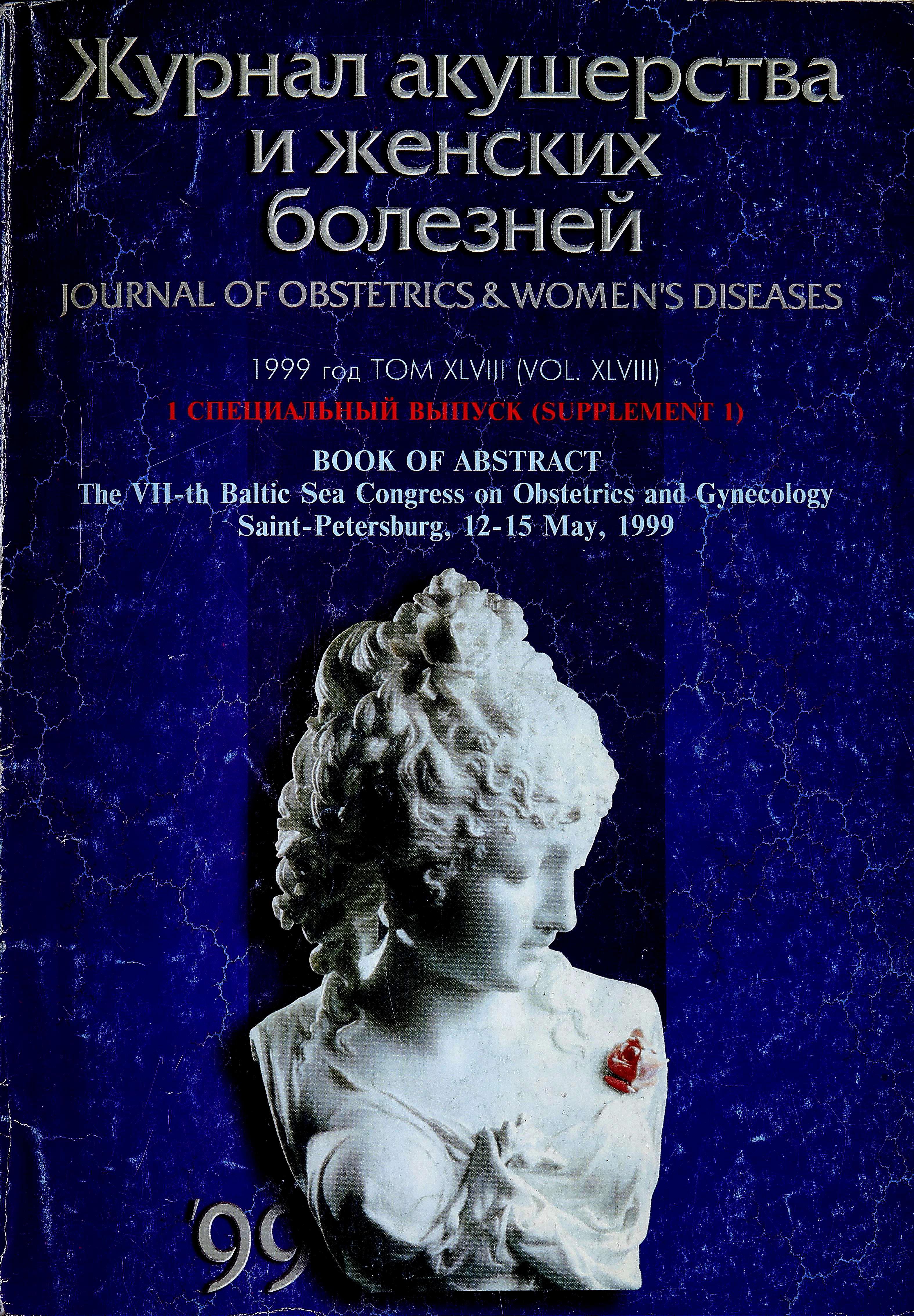Early diagnosis and stage-related therapy as major factors for preventing disability in children with perinatal cerebral pathology
- Authors: Serganova T.I.1, Kosiy S.N.1, Lisov N.S.1, Frantzuzova Z.M.1
-
Affiliations:
- St. Olga City Pediatric Hospital
- Issue: Vol 48, No 5S (1999)
- Pages: 139-139
- Section: Articles
- Submitted: 22.02.2022
- Accepted: 22.02.2022
- Published: 15.12.1999
- URL: https://journals.eco-vector.com/jowd/article/view/101398
- DOI: https://doi.org/10.17816/JOWD101398
- ID: 101398
Cite item
Full Text
Abstract
The study was carried out on the basis of St. Olga CPH. The aim of the study was to establish methods of early diagnosis of cardinal CNS function disorders in children during their first three years and to estimate the approaches to stage-related therapy of children with cerebral palsy.
Full Text
The study was carried out on the basis of St. Olga CPH. The aim of the study was to establish methods of early diagnosis of cardinal CNS function disorders in children during their first three years and to estimate the approaches to stage-related therapy of children with cerebral palsy.
Strictly determined set ofpartial components ofpsychic function was qualitatively and quantitatively evaluated in accordance with the classification of prespeech development delay. For one-year old babies: visual, hearing and vocal function, emotions, visual and motor coordination, prerequisites for expressive speech (reflected and spontaneous babbling, non-differentiated chattering) and expressive speech (differentiated chattering, words), prerequisites for impressive speech and impressive speech, and reflexes of oral automatism, persistent synkineses preventing the development of speech stereotypes. For two-three-year-old children: visual, hearing and vocal function, emotions, visual and motor coordination, visual and spatial ideas, expressive speech, impressive speech, game activity. The quality of motor development was estimated correspondingly to righting and statotonic reaction (chain symmetric righting reflex).
By the first year of life (n=150) — 10.7% of children with early stage of cerebral palsy demonstrated the I-II degree delay of prespeech development, 89.3% — the III-IV degree delay of prespeech development.
Among 213 children, who were diagnosed cerebral palsy by the 6-7 month and got comprehensive complex therapy, follow up (4-7 years) revealed contractures (7.1%) in the joints of upper and lower extremities (predominately functional), 84 children, in whom cerebral palsy was diagnosed after the first year of life contractures were demonstrated in 41.6% of cases (predominately rigid), and 125 children who did not get systematic therapy demonstrated multiple contractures (predominately rigid) in 50.5% of cases after the first course of treatment.
So, if pre- and postnatal maturing of brain structures controlling the development of motor, psychic and speech functions is stage-related, then therapy if undertaken within appropriate period can facilitate their normal evolution.
About the authors
T. I. Serganova
St. Olga City Pediatric Hospital
Author for correspondence.
Email: info@eco-vector.com
Russian Federation, Saint Petersburg
S. N. Kosiy
St. Olga City Pediatric Hospital
Email: info@eco-vector.com
Russian Federation, Saint Petersburg
N. S. Lisov
St. Olga City Pediatric Hospital
Email: info@eco-vector.com
Russian Federation, Saint Petersburg
Z. M. Frantzuzova
St. Olga City Pediatric Hospital
Email: info@eco-vector.com
Russian Federation, Saint Petersburg
References
Supplementary files







